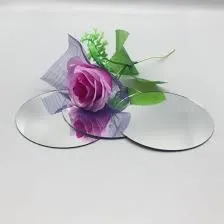

The Allure of Decorative Glass Art
Decorative glass art has captivated artists and enthusiasts alike for centuries, representing a unique fusion of creativity, craftsmanship, and the inherent beauty of glass itself. From shimmering stained glass windows in ancient cathedrals to modern glass sculptures that push the boundaries of imagination, the versatility of glass as a medium has made it an enduring favorite in the art world.
The History of Glass Art
The history of glass art can be traced back over 3,500 years to the ancient civilizations of Mesopotamia and Egypt, where artisans first began to mold and shape glass. Initially, glass was used for practical items, such as vessels and beads. However, as techniques evolved, the aesthetic potential of glass became apparent. By the Middle Ages, stained glass windows became synonymous with Gothic architecture, transforming spaces with vibrant colors and intricate narratives depicting religious stories.
The Renaissance marked a significant turning point in glass art, particularly within the Venetian glassmaking industry. Craftsmen in Murano perfected techniques such as lampworking and glassblowing, creating exquisite glassworks that celebrated both form and function. This period laid the groundwork for modern glass art, establishing glass not just as a medium for utility but as a canvas for artistic expression.
Techniques and Styles
Today, decorative glass art encompasses a wide range of techniques and styles, each contributing to the diversity and richness of the medium. Some of the most notable techniques include
1. Stained Glass This traditional method involves cutting and assembling colored glass pieces held together by lead came or copper foil, often utilized in window installations that tell a story or depict a scene.
2. Blown Glass This dynamic process involves inflating molten glass into a bubble, which can be shaped and manipulated. Artists create everything from delicate vases to large-scale installations, allowing for unique organic forms.

3. Fused Glass This technique combines glass pieces in a kiln, where they are heated until they fuse together. It provides endless possibilities for texture and design, resulting in stunning decorative panels and jewelry.
5. Glass Casting Artists create sculptures by pouring molten glass into molds. This technique allows for larger, more sculptural works that maintain the ethereal quality of glass.
Contemporary Trends
In contemporary art, decorative glass has gained renewed appreciation. Artists are experimenting with new technologies and methods, such as 3D printing and digital design, enabling them to push the boundaries of traditional glass art. Collaborations between glass artists and designers from various disciplines, including architecture and fashion, have resulted in innovative pieces that challenge perceptions of glass as a fragile medium.
Moreover, environmental consciousness has influenced glass artists, leading to the use of recycled materials and sustainable practices in their work. These approaches not only reflect a growing awareness of ecological issues but also contribute to the artistic dialogue concerning the role of art in society.
The Emotional Impact of Glass Art
One of the most compelling aspects of decorative glass art is its ability to evoke emotions. The interplay of light and color creates dynamic visuals that can transform a space. Whether it's through a striking glass sculpture standing proudly in a gallery or a softly glowing stained glass window in a quiet sanctuary, glass art has the profound ability to inspire awe and reflection.
In summary, decorative glass art is a rich and multifaceted field that continues to evolve. From its historical roots to contemporary innovations, the beauty, techniques, and emotional depth of glass art ensure that it remains a significant and celebrated aspect of our cultural heritage. Whether as a collector's item or a personal expression, glass art invites us to appreciate the delicate interplay of light, color, and form—forever enchanting those who pause to admire its brilliance.